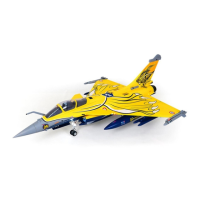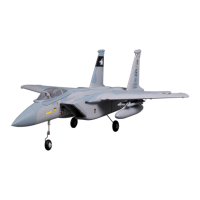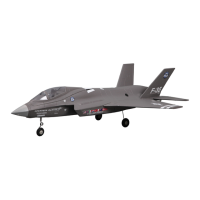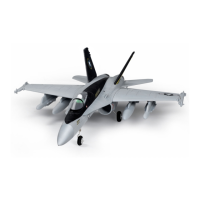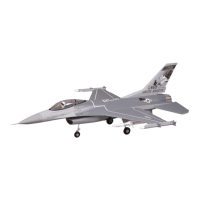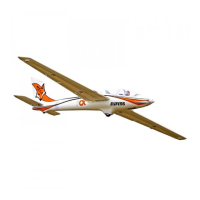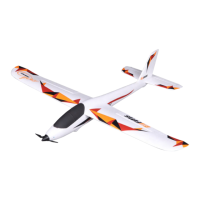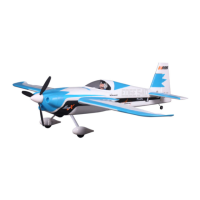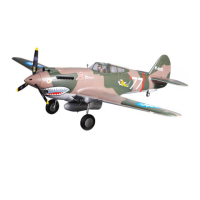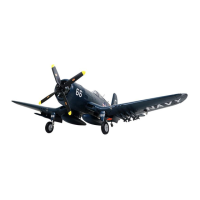Do you have a question about the FMS F-86 80mm and is the answer not in the manual?
General safety guidelines, age recommendation, and operational advice for model aircraft use.
Crucial safety instructions for handling, charging, and storing Li-Po batteries to prevent fire or injury.
Historical context of the F-86 fighter jet development and its impact.
Detailed description of the FMS F-86 model's realistic details and electronic configuration.
Key technical specifications of the F-86 model, including dimensions, weight, and components.
Instructions for aligning and securing the wing spar and attaching the wings to the fuselage.
Steps for connecting the extension wire and securing the rear fuselage to the front fuselage.
Guide for installing vertical/horizontal stabilizers and non-functional scale parts like antennas.
Procedure for installing the battery, adjusting CG, and connecting the receiver.
Key information regarding ESC safe start, motor rotation, and brake settings.
Steps for binding the receiver, checking control surface movements, and transmitter setup.
Guidance on checking Center of Gravity (CG), performing range checks, and monitoring flight time.
Instructions for initial takeoff and climbing procedures for the model aircraft.
Suggested control throw settings (High/Low Rate) for elevator, aileron, and rudder.
Information on factory settings for control horns and servo arms for desired control response.
Procedure for installing linkage rods for control surfaces with servos in neutral position.
Guidance on choosing flying sites, takeoff, and landing procedures for safe operation.
Recommendations for repairing foam parts and checking screw tightness before flights.
Common problems, possible causes, and solutions for aircraft response and power issues.
Detailed specifications for various ESC models, including current, BEC, and battery compatibility.
Explanation of programmable ESC features such as brake setting and low voltage protection.
Instructions for initial ESC setup, including throttle range calibration and normal startup.
Description of ESC protection features like start-up failure, over-heat, and throttle signal loss.
Common ESC issues, their possible causes, and recommended solutions for troubleshooting.
Steps to enter the ESC programming mode using the transmitter.
List of selectable ESC parameters and their corresponding tones and prompt sequences.
Procedure for setting programmable values using the throttle stick and confirming with tones.
Methods to safely exit the ESC programming mode after making adjustments.
Instructions for cutting, wetting, positioning, and applying water slide decals to the model.
Illustrations showing the placement of decals on the fuselage and tail sections of the aircraft.
Diagrams indicating the correct placement of decals on the upper and lower wing surfaces.
| Motor | 3280-KV2100 |
|---|---|
| EDF Diameter | 80mm |
| Flaps | Yes |
| LED Lights | Yes |
| Material | EPO Foam |
| Radio | 6 Channel |
| Recommended Battery | 6S 4000mAh-5000mAh |
| Recommended Receiver | 6 Channel |
| Retracts | Electric |
| Servos | 9g Digital Servos x 6 |
